At the entrance of the exhibition, Revel in the Universe’s Infinite Flux: Yuan Yunsheng & His Dream of Murals Painting, two of Yuan Yunsheng’s self-portraits and an excerpt from an essay usher the audience into his first retrospective at his alma mater, the Central Academy of Fine Arts (CAFA). One of the two self-portraits selected for this exhibition was made in 1975, when Yuan was assigned to publicity work at the Changchun Workers’ Cultural Palace. His precise control of the brush and colours in the small painting, as well as his excellent ability to portray the image, clearly convey the unabashed enthusiasm and determination in the artist’s gaze.
The other self-portrait, making its first public appearance upon creation in the 1980s, shows the artist’s interest in and practice of Cubist techniques. The shoulder-length hair has become his signature look, and with the cutting and splicing of blocks, Yuan Yunsheng, situated at the crossroads of Chinese and Western cultures as well as classical and modern art, is constantly “deconstructing” and “reconstructing” himself. What remains unchanged is the powerful gaze that penetrates through the canvas.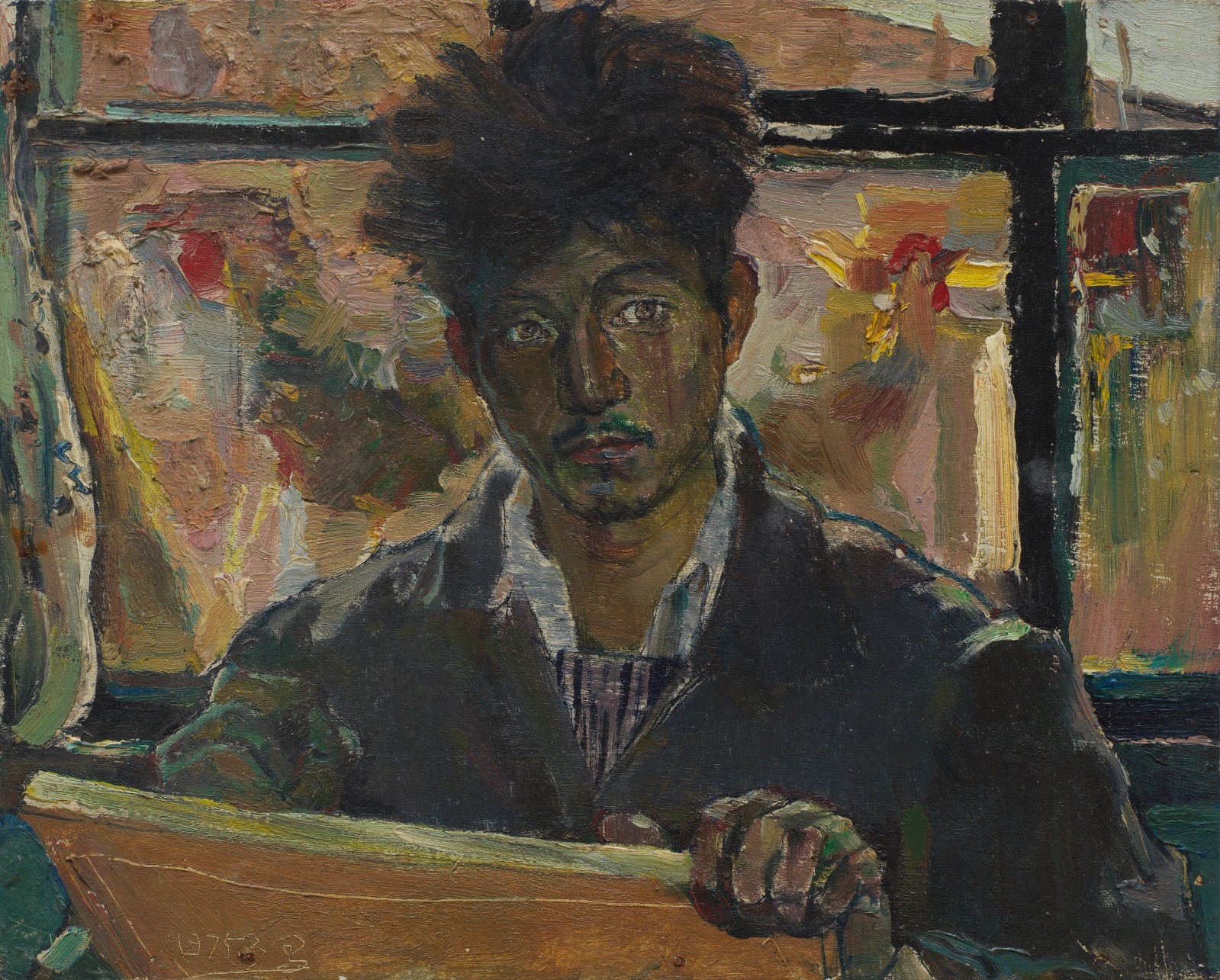
“Self-Portrait”, 28×35 cm, Oil on canvas, 1975, Collection of the Artist

“Self-Portrait”, 168×92 cm, Oil on canvas, 1980s, Collection of the Artist
Compared with several exhibitions in recent years that have focused on Yuan’s artistic journey and thoughts, such as Journey of Yuan Yunsheng presented by Shanghai Long Museum in 2022, which comprehensively reviewed the artist’s 70-year-long artistic journey, and Back to Nantong: Yuan Yunsheng Art Exhibition in 2023, which highlighted his home town where his artistic life began, this exhibition, Revel in the Universe’s Infinite Flux: Yuan Yunsheng & His Dream of Murals Painting, is based on the relationship between the artist and CAFA. It connects the points of interaction with his alma mater throughout his education, teaching, donation of his works, collection and research, illustrating the path that Yuan has taken in art.
Revolving “His Dream of Murals Painting”, the exhibition is anchored to Yuan’s nine murals at different stages, which are featured together with other artistic creations in the same period spread in four different chapters, and collectively complete the unique artistic landscape pertaining to Yuan. In the artist’s personal artistic quest, his personal destiny and choices converge with the current of the times. Thus, the exhibition does not only focus on Yuan’s love and perseverance for murals, but it also cares for the “mural dreams” shared by his fellow pioneers in art [1].


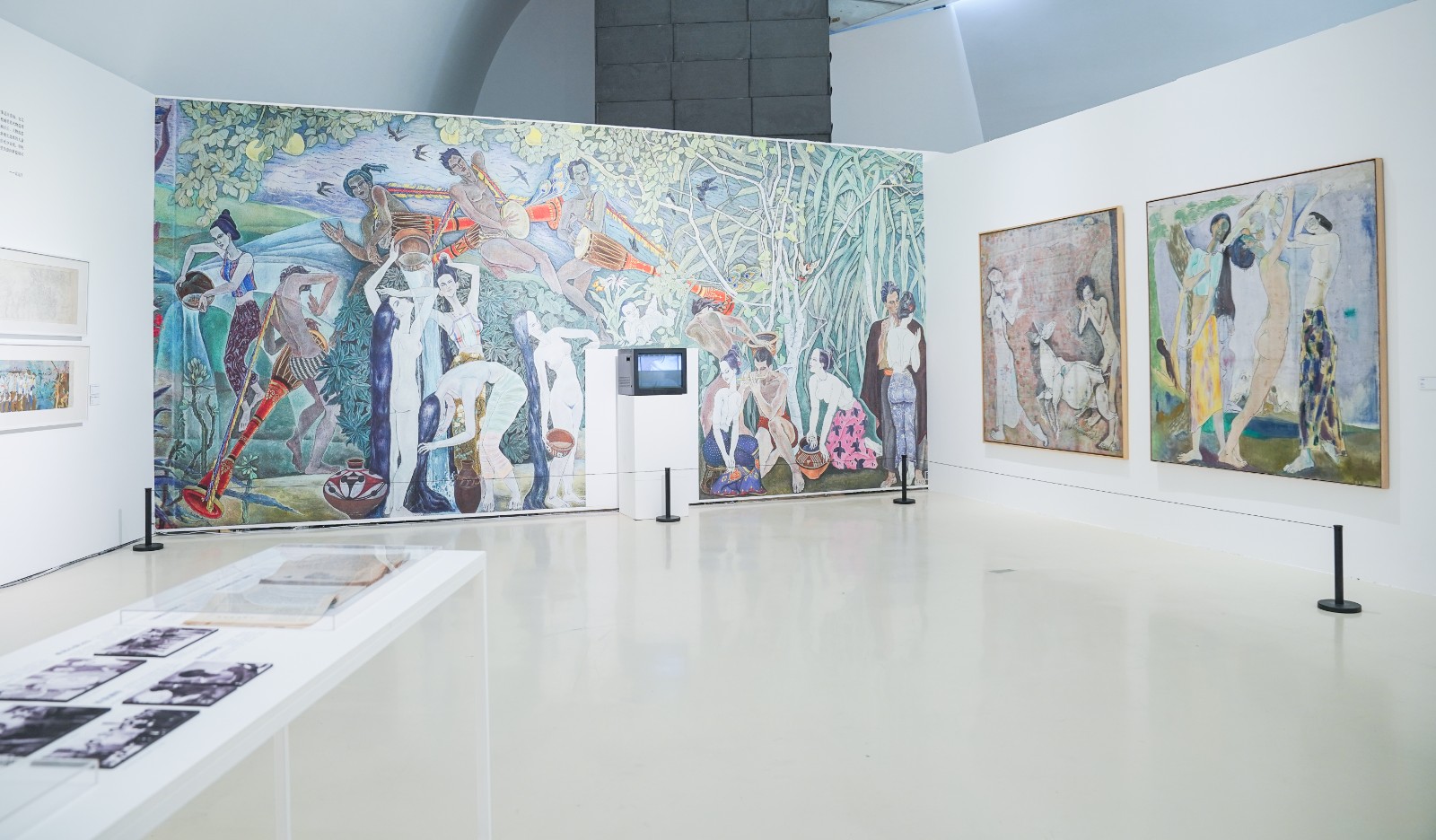
View of the exhibition, Revel in the Universe’s Infinite Flux: Yuan Yunsheng & His Dream of Murals Painting
“Two Ghosts”: How the dream of murals painting started and grew
“In 1958, I entered Mr. Dong Xiwen’s Studio, and my dream of murals painting started.”
In 1980, the article “The Dream of Murals Painting” was published in Art Research. There, Yuan retraced his first mural painting practice, “Water-Splashing Festival: An Ode to Life”, including the background, the reasons for the choice of theme, and the details of the painting. He also responded to issues such as “human body” and “exaggerated distortion”, which had caused controversy and widespread discussion at the time. While clarifying his creative vision of “painting the Water Splashing Festival in order to express people’s pursuit of and yearning for a free and happy future”, Yuan elaborated his own perception and understanding of the art of mural painting, drawing particular attention to the interdependent, holistic spatial relationship and comprehensive dialogue between mural painting and architectural art. He proposed that the spatial treatment in murals painting should be “flat and decorative” [2].

“Water-Splashing Festival: An Ode to Life”, First draft in colour, 33.9×198 cm

“Theatre”, 199×188 cm, Oil on canvas, 1980, Collection of the Artist
At the beginning of this essay, Yuan traced the start of his dream of mural painting, which was entering Dong Xiwen’s Studio in 1958. In 1962, after completing two years of labour reform in Shuangqiao Farm, Yuan formally began to plan his graduation work. He recalled “two ghosts”, one was Dunhuang, and the other was “Leaves that comprehend antiquity”, paintings by Chen Hongshou (1598-1652), both of which haunted his mind. The town of Luzhi on the outskirts of Suzhou became the perfect place for him to digest, understand, and put thoughts into practice. In this typical Jiangnan water town, the clothing of women, the stones extending to the water surface, and the bustling marketplace were all surging with the living atmosphere of an ancient culture that continued to this day. Yuan spent over two months here sketching, and thus accumulated copious vivid materials for future creations. Plus the line drawings over a few months before that, Yuan became able to naturally present all the boisterous life details on palm-sized cotton paper, and quickly organise them into a complete picture. This was how the first mural draft, “Memory of the Water Town”, was created.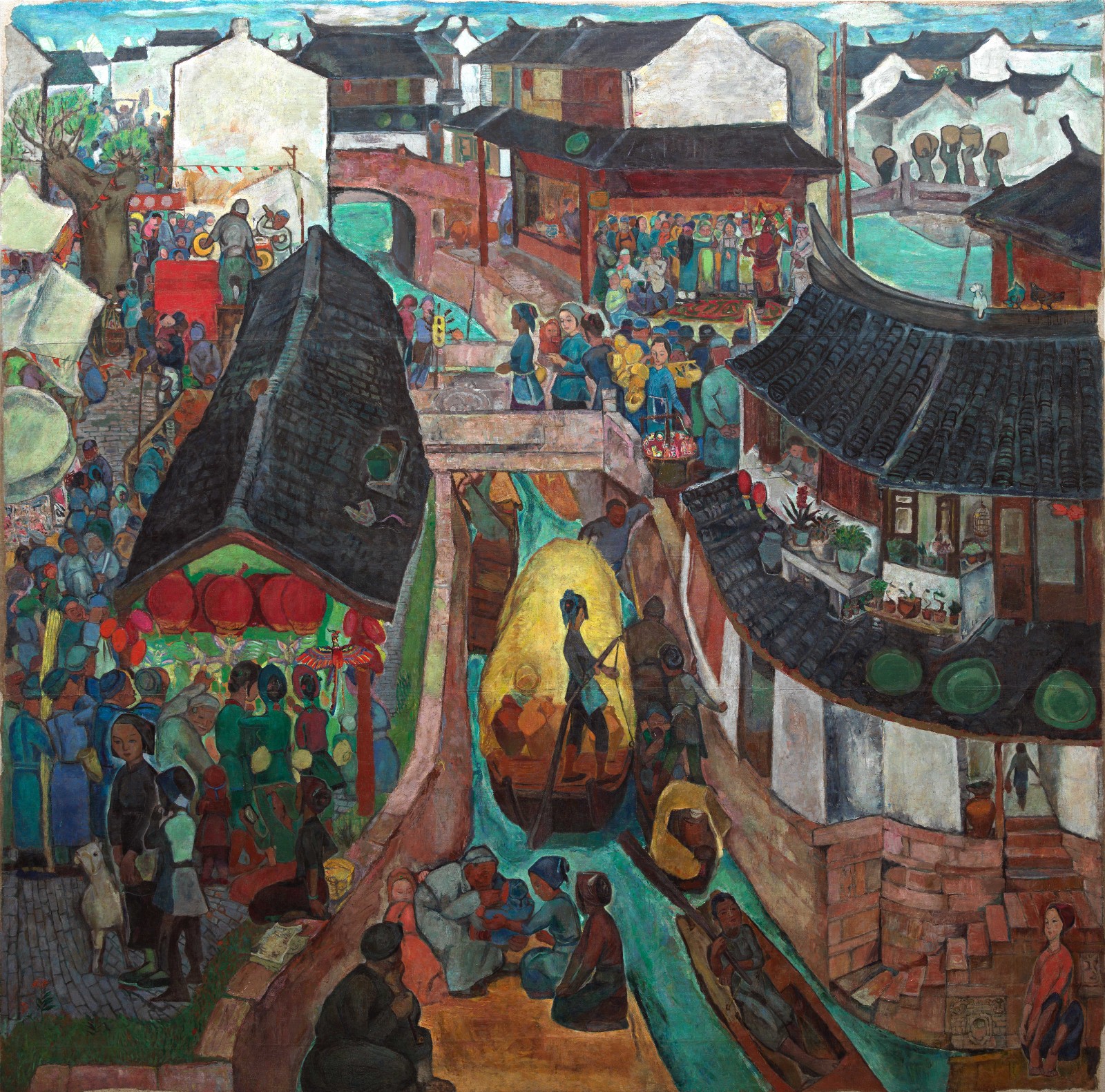
“Memory of the Water Town”, 243×245 cm, Oil on canvas, 1962, 2021, artist’s donation to the Art Museum of the Central Academy of Fine Arts
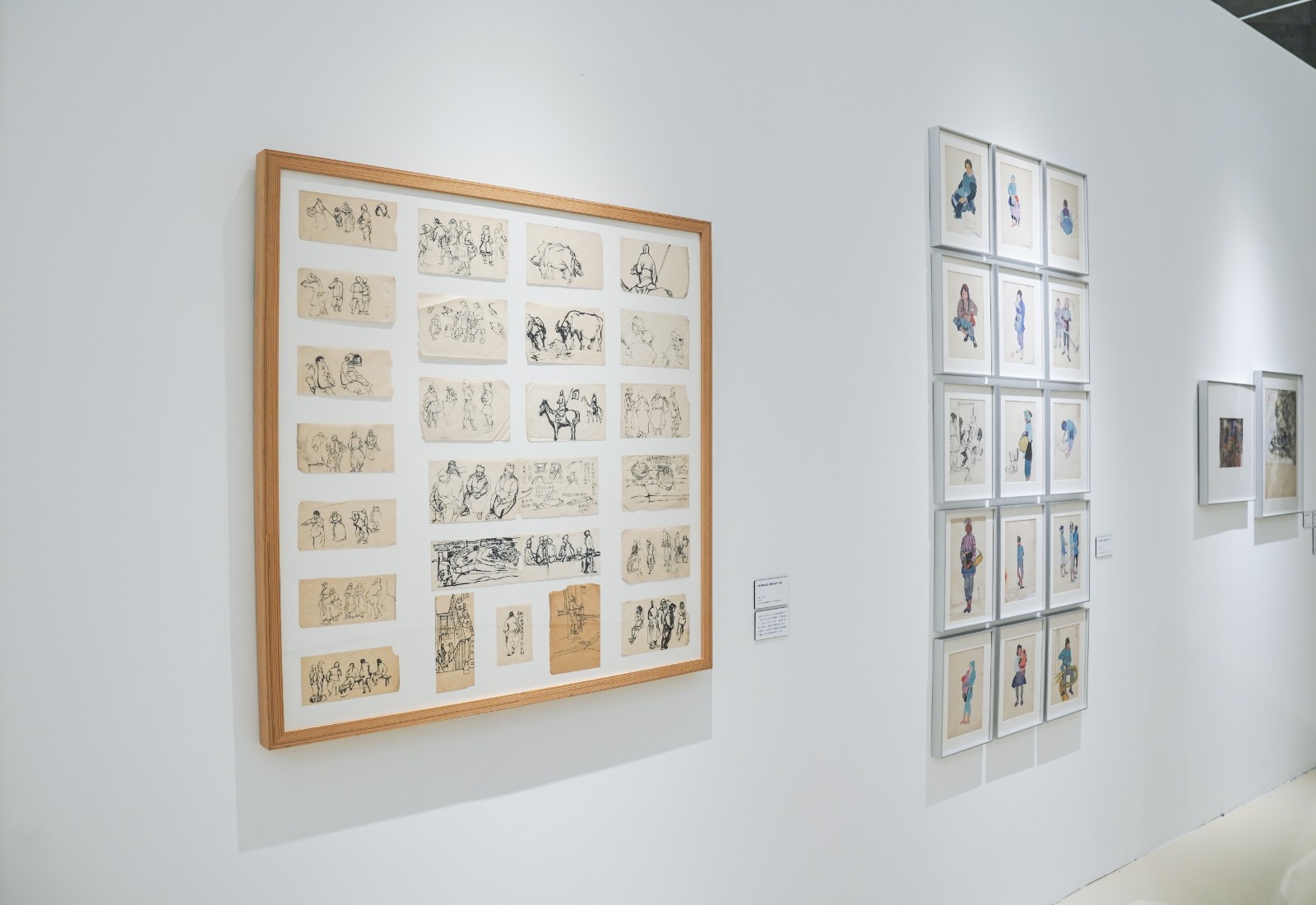
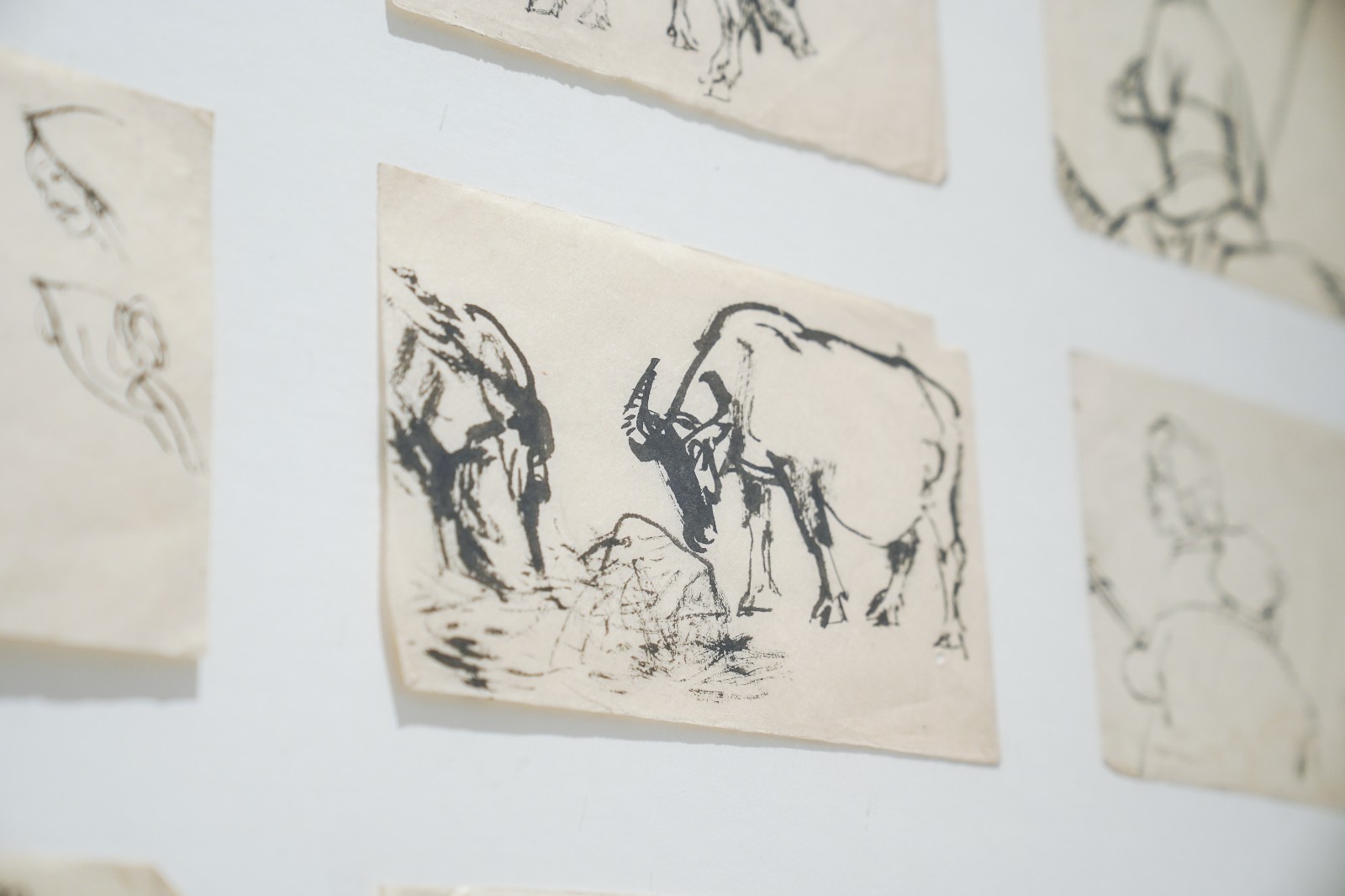
“Memory of the Water Town”, view of the creative materials at the exhibition
“Memory of the Water Town” was highly recognised by his instructor, Dong Xiwen, for its source of creation, techniques, and the finished work. Nonetheless, it was also criticised for not conforming to the mainstream socialist realism paradigm of creation. The debate over the work swiftly spread from the evaluation of graduation works within the Academy of Fine Arts to the wider society involving concerns and critique. The first chapter of the exhibition, “The First Trial of Mural Painting”, explains how Yuan’s passion and perseverance towards the art of mural painting started.
“Scroll of Sketching in Yan’an”, 81×450 cm, Ink and brush on paper, 1974, Collection of the Artist
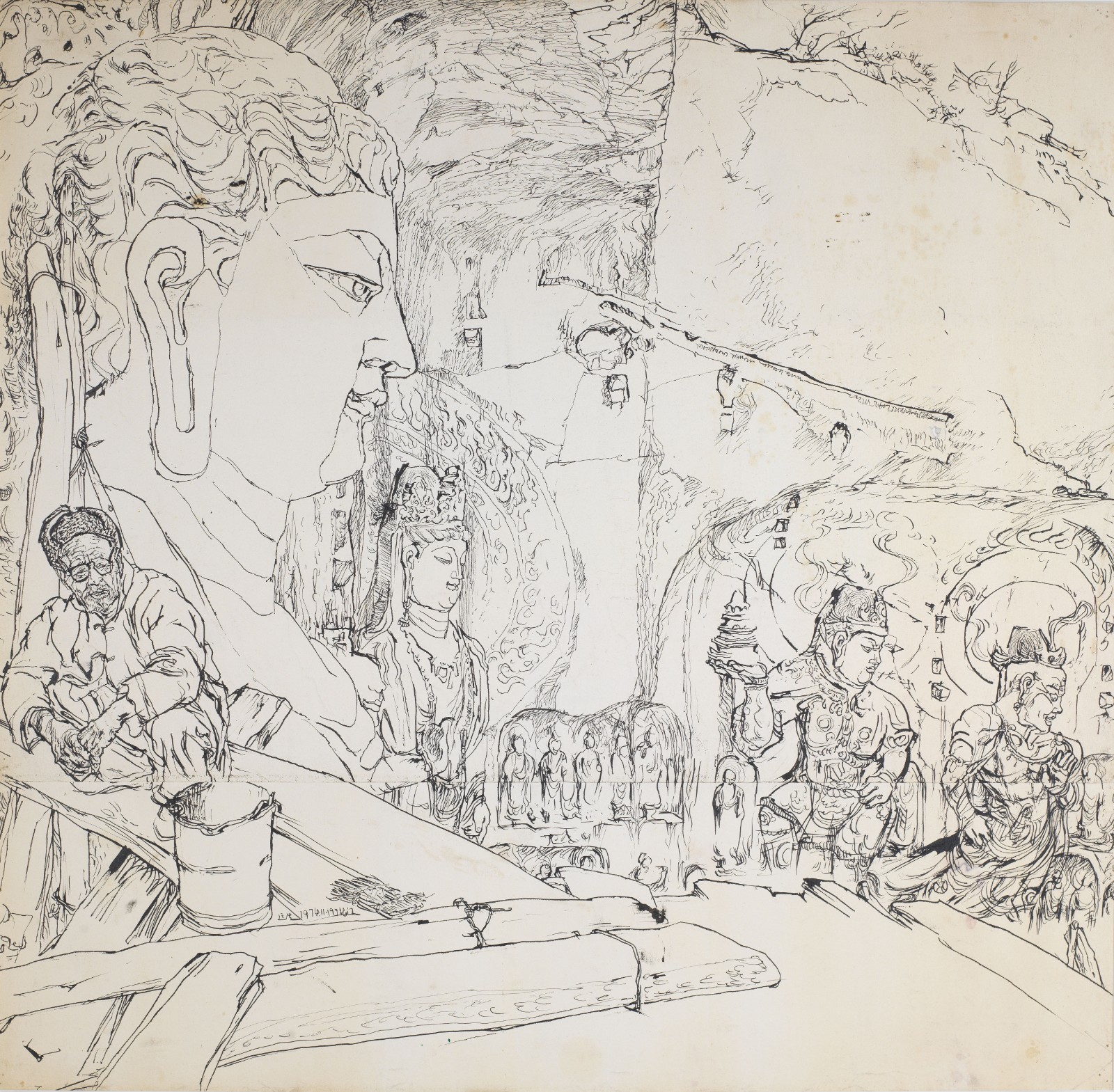
“Sketchign in Longmen Grottoes”, 75×77 cm, Ink and brush on paper, 1974, Collection of the Artist
In the next chapter, “Mural Dream and Chinese Soul”, Yuan’s sketching experience in Yan’an and Longmen Grottoes in 1974, and in Xishuangbanna and Lincang Dai ethnic area in 1978, as well as the creation and controversy of “Water-Splashing Festival: An Ode to Life” are presented. In the 4.5-metre-long “Scroll of Sketching in Yan’an”, the magnificent scene of the Yellow River water breaking out of the ice and gushing forward at the end of the winter immediately reminds viewers of the “wonderful space” between the figurative and the abstract in the “Picture of Water” in Southern Song Dynasty by Ma Yuan (1190-1225). Yuan shared his deep feelings that “he had not yet had enough of the pleasure even after two days of line drawing”. Regarding his iconic painting, the dense and rich flora of Xishuangbanna and Lincang Dai area, together with the pure, simple, and enthusiastic inhabitants excited him even more. Both the people and scenery there showed exuberant vitality. Such pulsing energy of life energies burst into Yuan’s rich world of lines, and convey the kind and passionate soul and energy of this ethnic group.
“Dai Village I”, 28×79 cm, Pen, 1978, Collection of the Artist

“One of the Yunnan Landscapes”, 28×109 cm, Pen on paper, 1978, Collection of the Artist
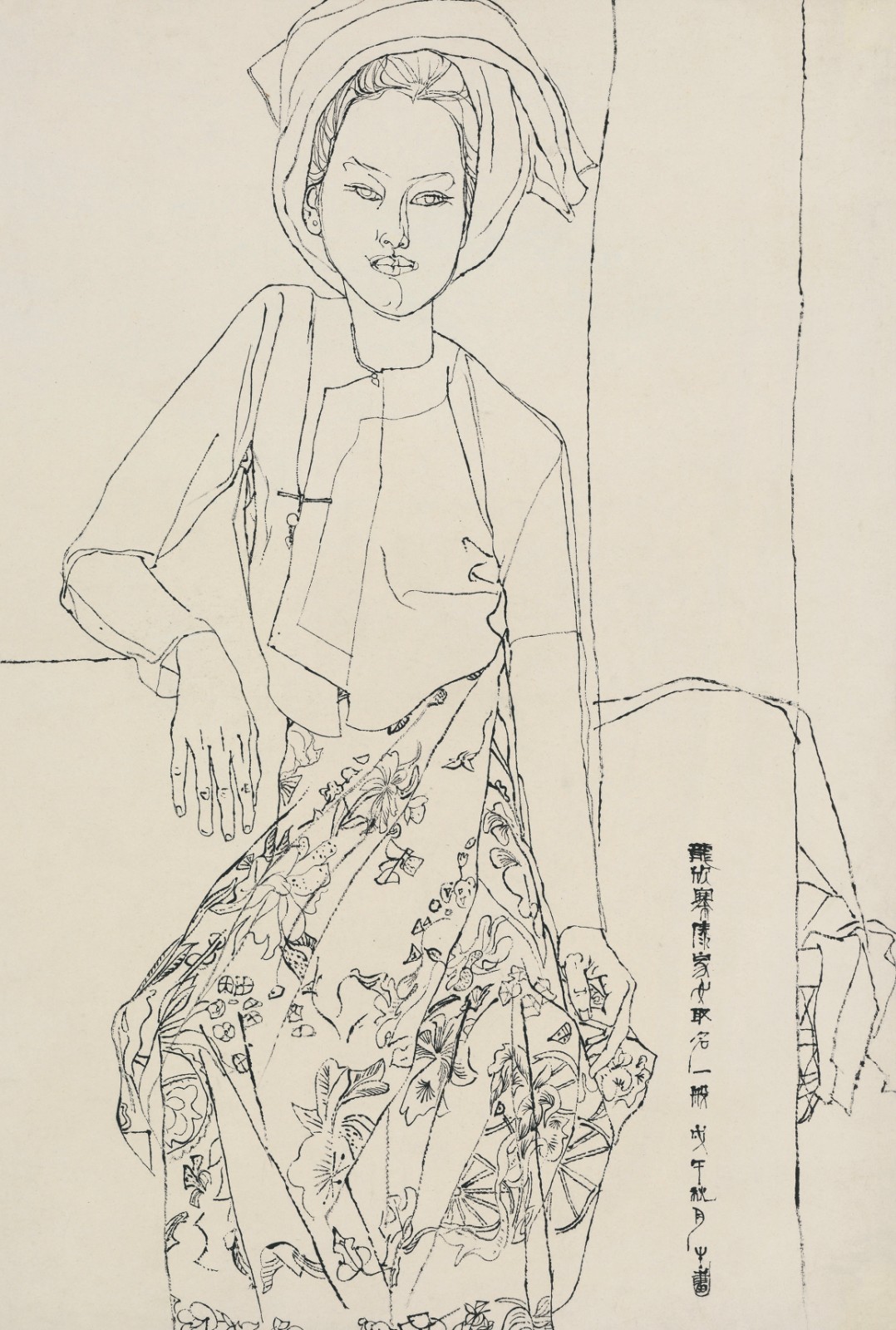
“One of the Figure Sketching in Yunnan”, 95×64 cm, Ink and brush on paper, 1978, Collection of the Artist
Past encounters had led to the birth of “Water-Splashing Festival: An Ode to Life”. The vast diversity embodied in the figure development and rhythmic expression via the traditionally Chinese line drawing, which Yuan keenly captured laid the foundation for him to further analyse the specific issues of colour and line, abstraction and figuration, East and West, and so on.
Fourteen Years Abroad: Colours and Lines
“The abstraction of art is, above all, the abstraction of the lines. This is precisely what characterises Eastern art. Independent lines do not exist in the world.”
In 1982, Yuan went to the United States as a visiting artist under the International Visiting Scholars Programme of the United States Information Agency. In the fourteen years since then, he stood on the soil of Western culture, encountering the West, and getting to know the West. When the other side of the world used to exist in books and imagination formed under his feet, China could only be viewed from a distance. The change of distance shaped a new vision, and the “time difference” between Chinese and Western art developed Yuan’s understanding of lines and colours. Between the East and the West, and between the modern and the traditional, he attempted to find the middle path that embraced differences.
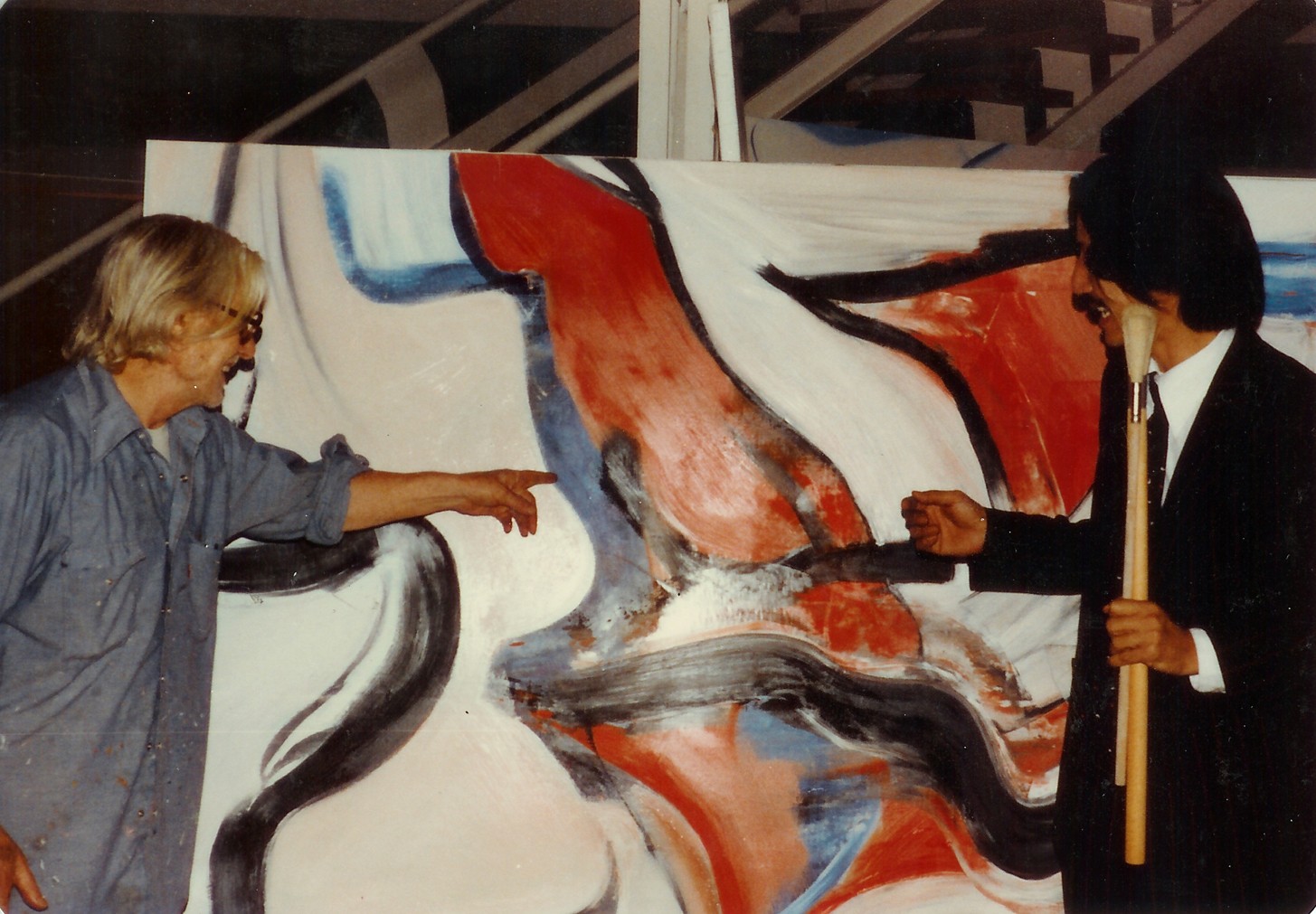
Yuan Yunsheng and Willem de Kooning in East Hampton, Long Island, New York in 1982
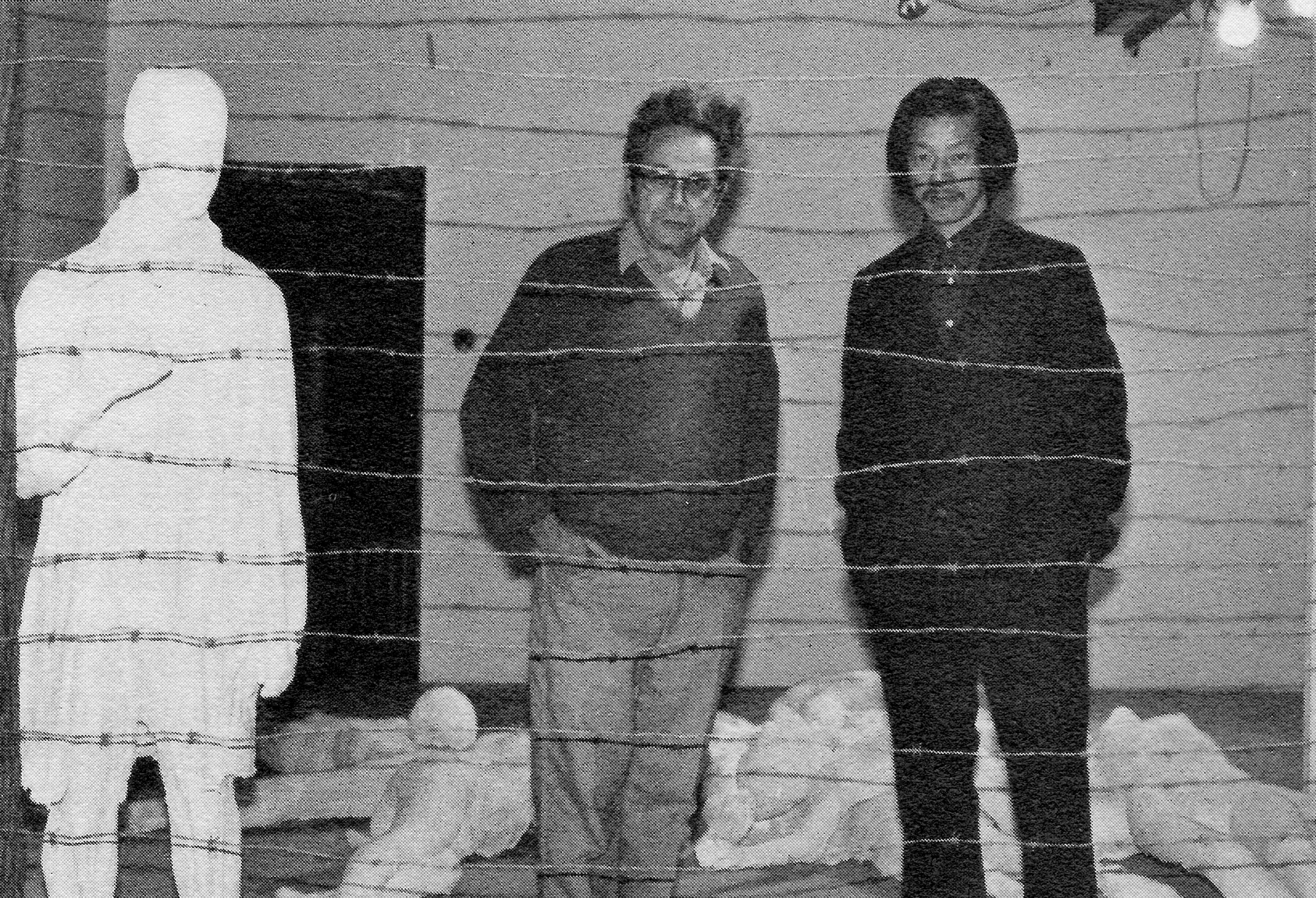
Yuan Yunsheng and George Segal with part of Segal’s sculpture “Holocaust” in 1983
During his stay in the United States, Yuan paid a visit to famous American contemporary artists, including Robert Rauschenberg, Willem de Kooning, Jasper John, and George Segal. Thereby, he was able to come into close contact with the ideas and language of Western contemporary culture and modern art. In Yuan’s case, “internationalisation” and “nationalisation” are never in an either/or relationship. He did not resist the baptism of Western art trends, and he never avoided the ideas and experiences that he had brought with him from China. Yuan accepted, absorbed and digested extensively in his creative work, thus constantly adjusting and reshaping his vision.
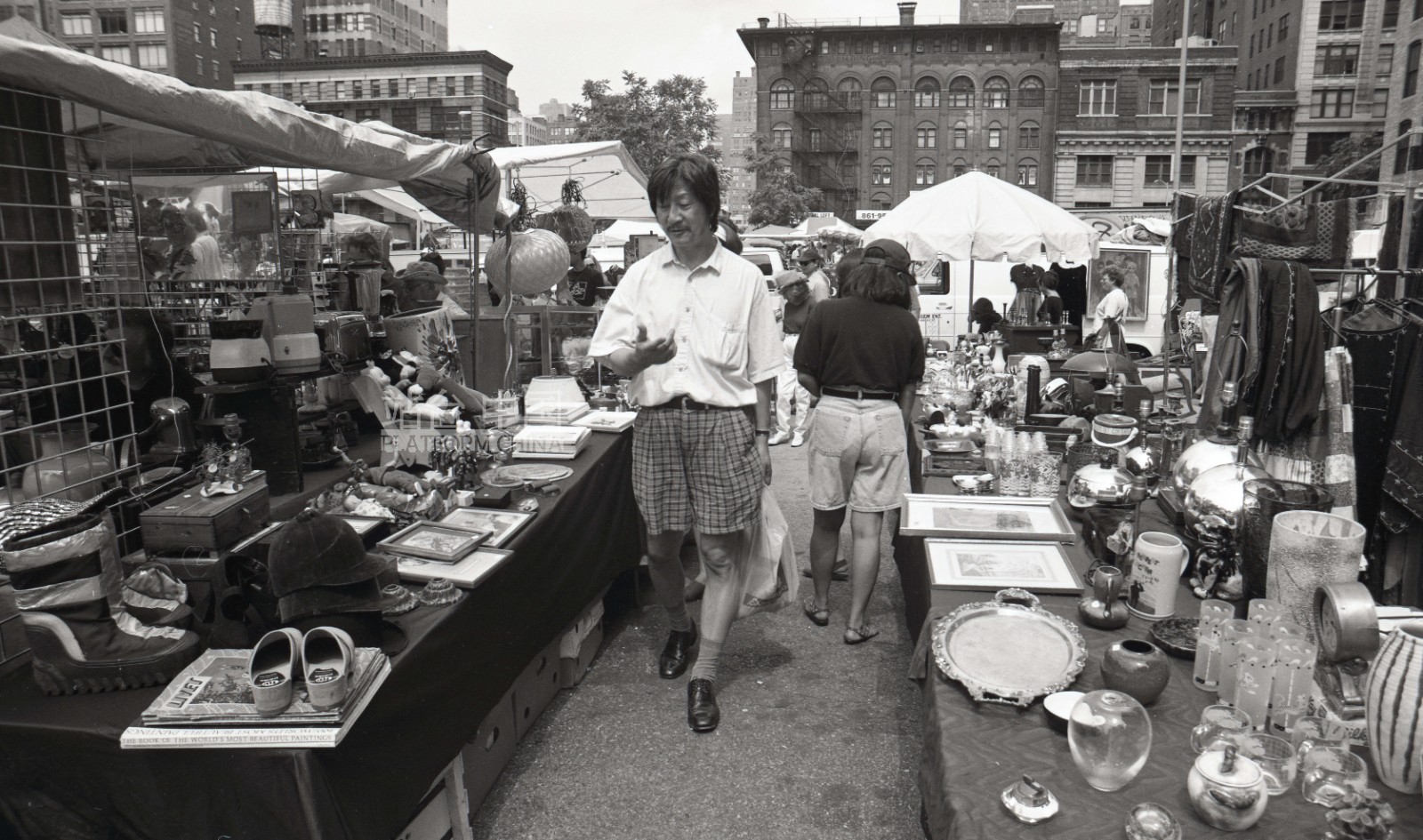
Yuan Yunsheng at the Manhattan Flea Market in New York City in August 1984 (photographed by Wang Rui), photo courtesy of Platform China
Before going to the United States, Yuan’s two articles, “Is Oil Painting Nationalised? (1981) and “Regeneration: Reflections on the Trip to the Northwest” (1982), conducted a profound critical analysis on modern art and national culture from different perspectives and with different cases. In the first article, he shared how he felt that “the nationalisation of oil painting” had become a slogan and was rigidly bound to a ready-made style. Taking Fengxiang clay sculpture as an example, Yuan identified the freedom of expression in genuine national culture and folk art in terms of modelling, power of colour, and transmission of spirit. This “freedom” allowed the creators to break through the established paradigm and certain slogans on a spiritual level, and thus reach the tolerant and rich “modernity”.
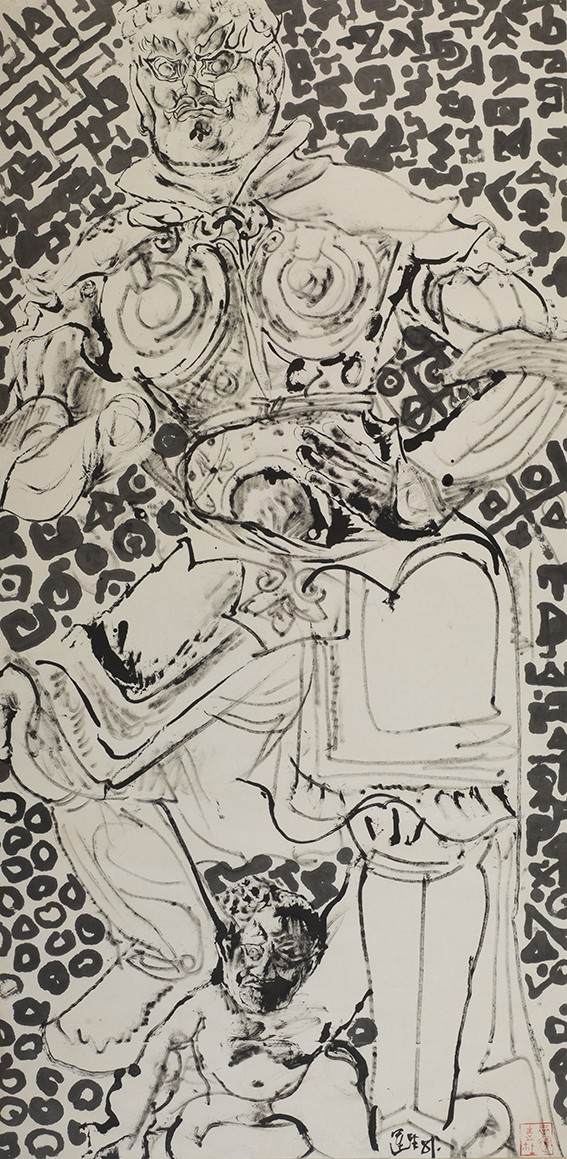
“Dunhuang”, 137×67 cm, ink on paper, 1981, Collection of the Artist
In the second article, Yuan studied the stone carvings on General Huo Qubing’s tomb and the statues from Northern Wei Dynasty, and scrutinised the understanding of Cheschakov’s sketches stressing singularity and rigidity, and investigated how the Chinese line drawing that captured the essence of “real sketching” incorporated what the creators saw, what they felt, and what they thought into the use of simple and concise “l(fā)ines”.

Dong Dong Qiang, part of the sketch series for the mural for Harvard University “Allegory of Mankind”, 51×76 cm, hard pen on paper, 1985, Collection of the Artist
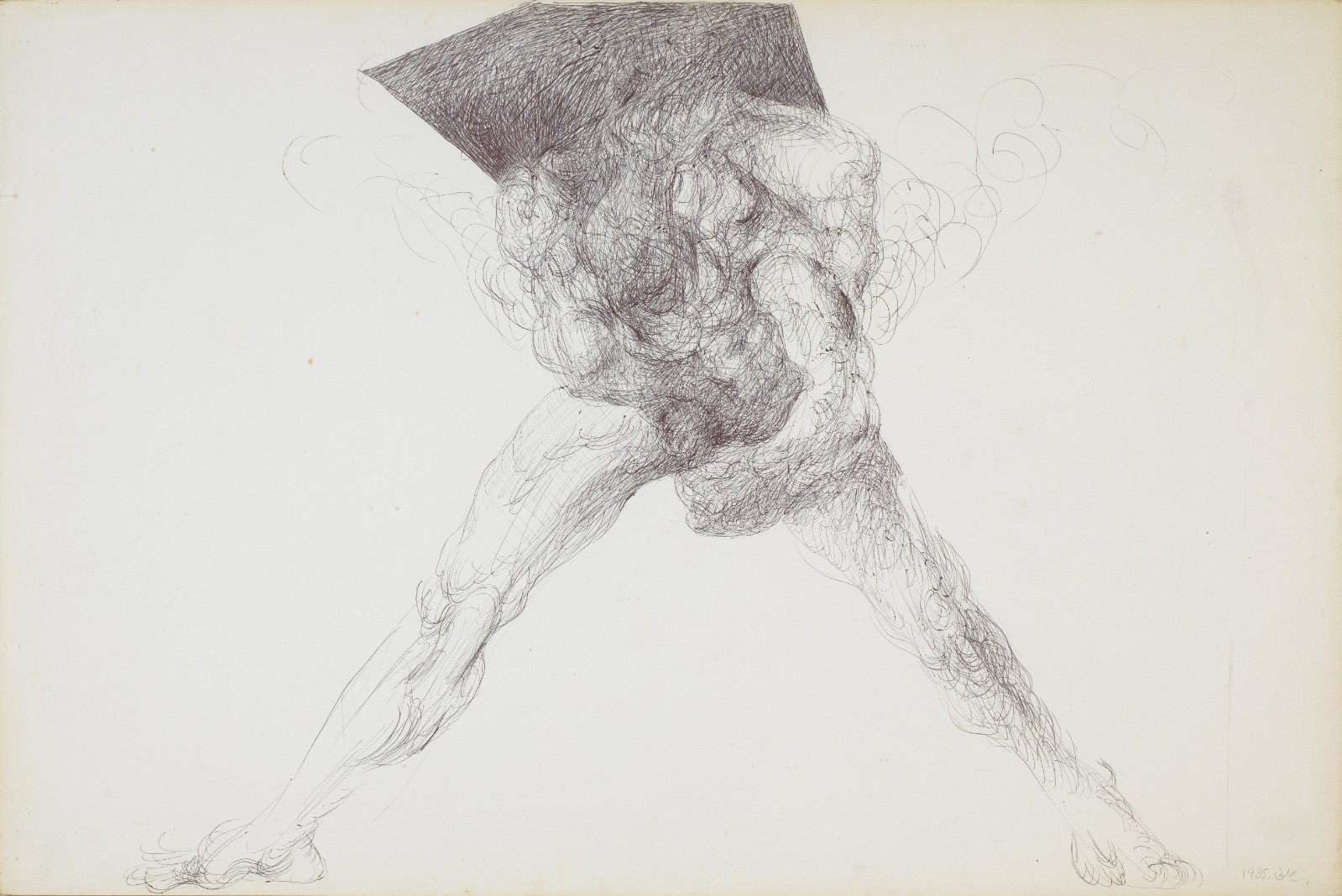
Lodge, part of the sketch series for the mural for Harvard University “Allegory of Mankind”, 51 ×76 cm, hard pen on paper, 1985, Collection of the Artist

Life, part of the sketch series for the mural for Harvard University “Allegory of Mankind”, 51× 76 cm, hard pen on paper, 1985, Collection of the Artist
“The use and study of “l(fā)ines” appear frequently in many of Yuan’s works from different periods of time, and is not limited to the medium of ink and brush. In the third chapter of the exhibition, “The Restless Chinese Heart”, the sketch series for the mural for Harvard University “Allegory of Mankind” demonstrate Yuan’s interest in Western ideas and languages such as surrealism and cubism around 1985. It also shows that he continued to study how simple “l(fā)ines” could shape broad and profound forms and infuse them with life-giving energy. The silk tapestry murals, “The Principle Remains Unchanged” (1986) and the silk tapestry “Allegory of Mankind” (1996), are both large-scale paintings completed with only lines and sketches.

Evolution, part of the sketch series for the mural for Harvard University “Allegory of Mankind”, 51×76 cm, hard pen on paper, 1985, Collection of the Artist

Passionate women, part of the sketch series for the mural for Harvard University “Allegory of Mankind”, 51×76 cm, hard pen on paper, 1985, Collection of the Artist

"The Principle Remains Unchanged", 210×1100 cm, silk tapestry, 1986, Collection of the Artist
In such works as “Introspection” (1980s), “Facing the Wall” (1987) and “Dancer” (1990), oil and acrylic paints are also integrated into this expression. The lines created with a few strokes, when commanded by the layers of black, white and grey, generate a tough tension with the space of the canvas. The strength and energy of life leap among the volume and space shaped by the lines.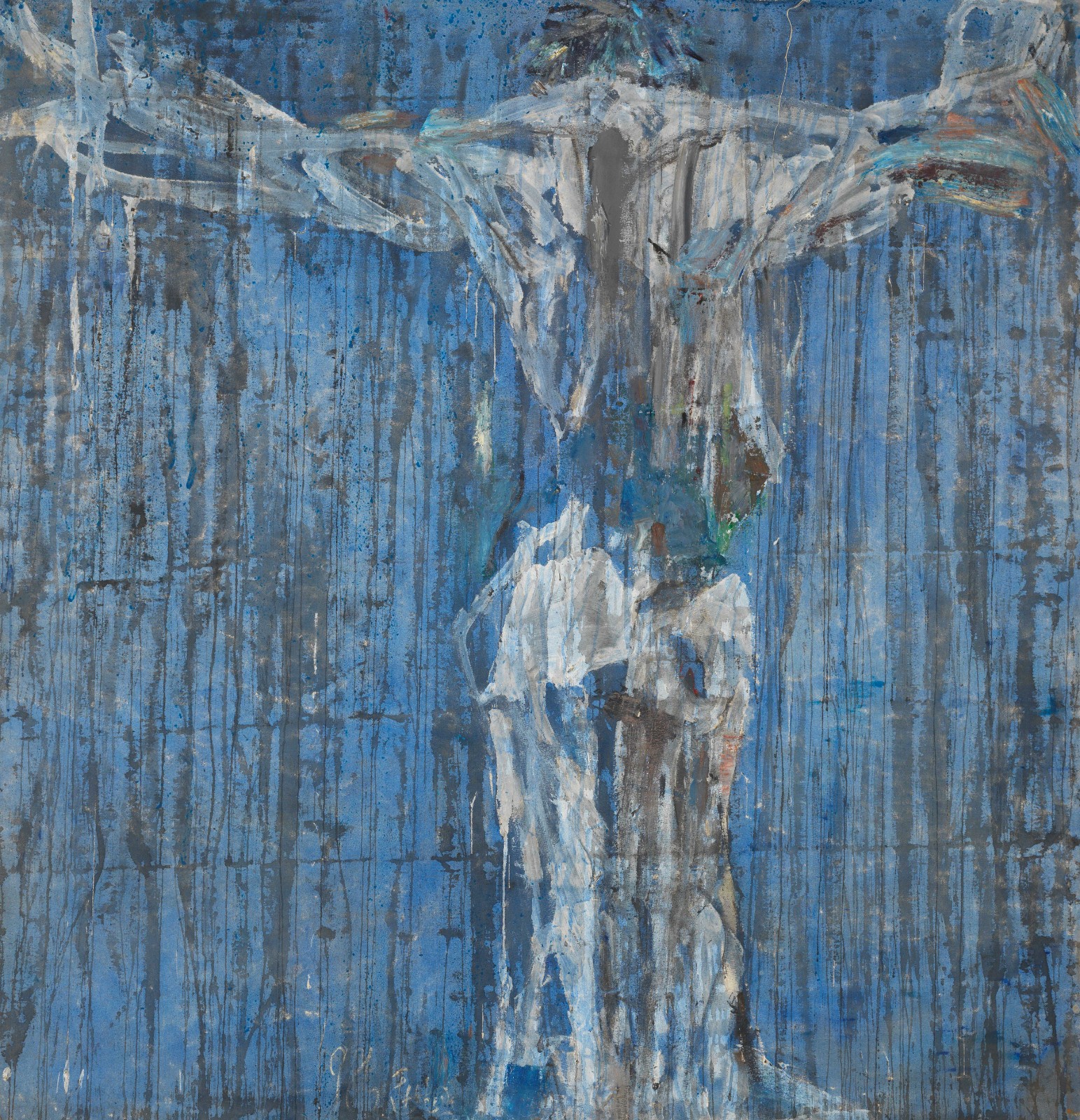
“Facing the wall”, 189×181 cm, oil on canvas, 1987, Collection of the Artist
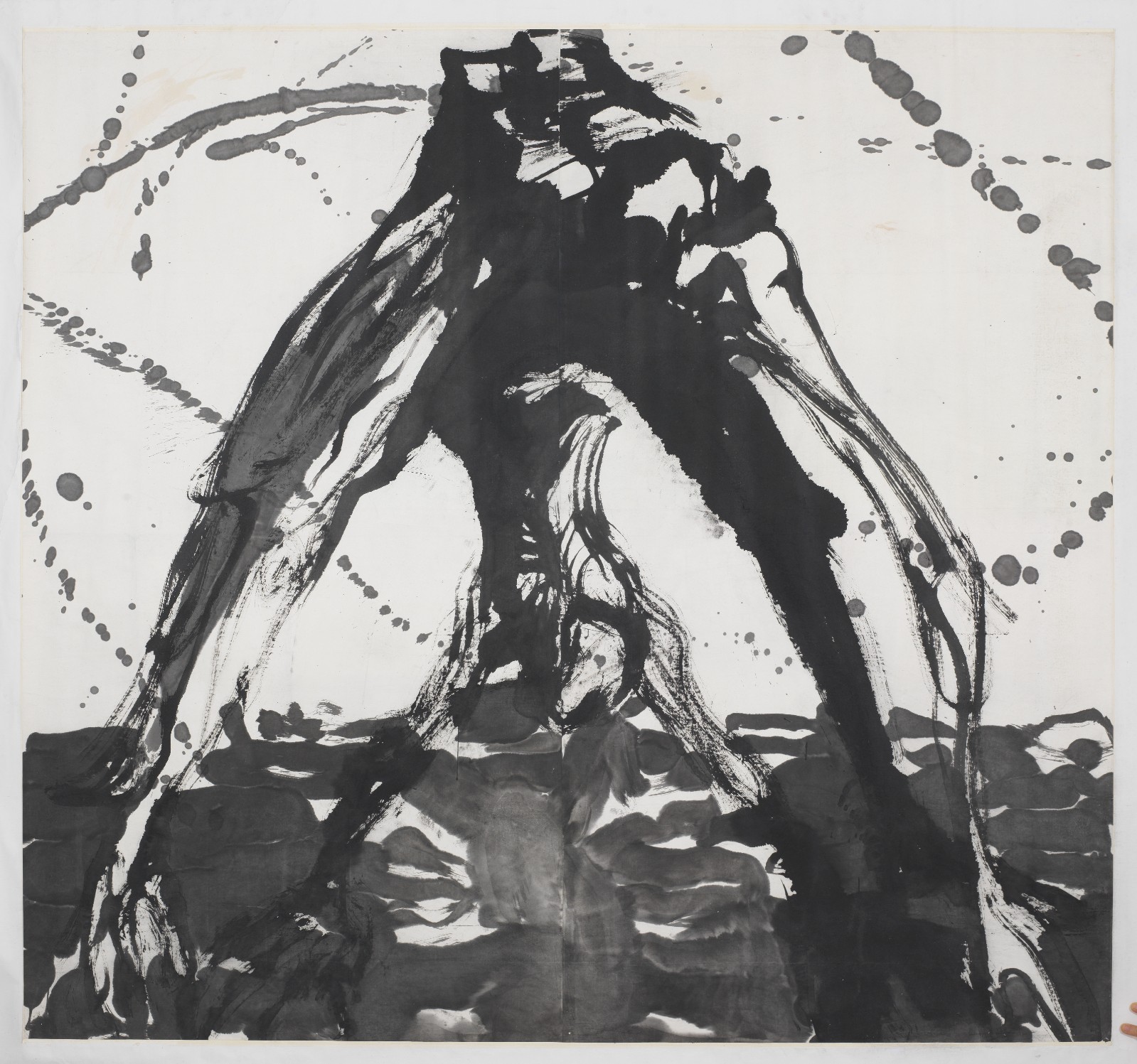
“Introspection”, 174×187 cm, ink on paper, 1980s, Collection of the Artist
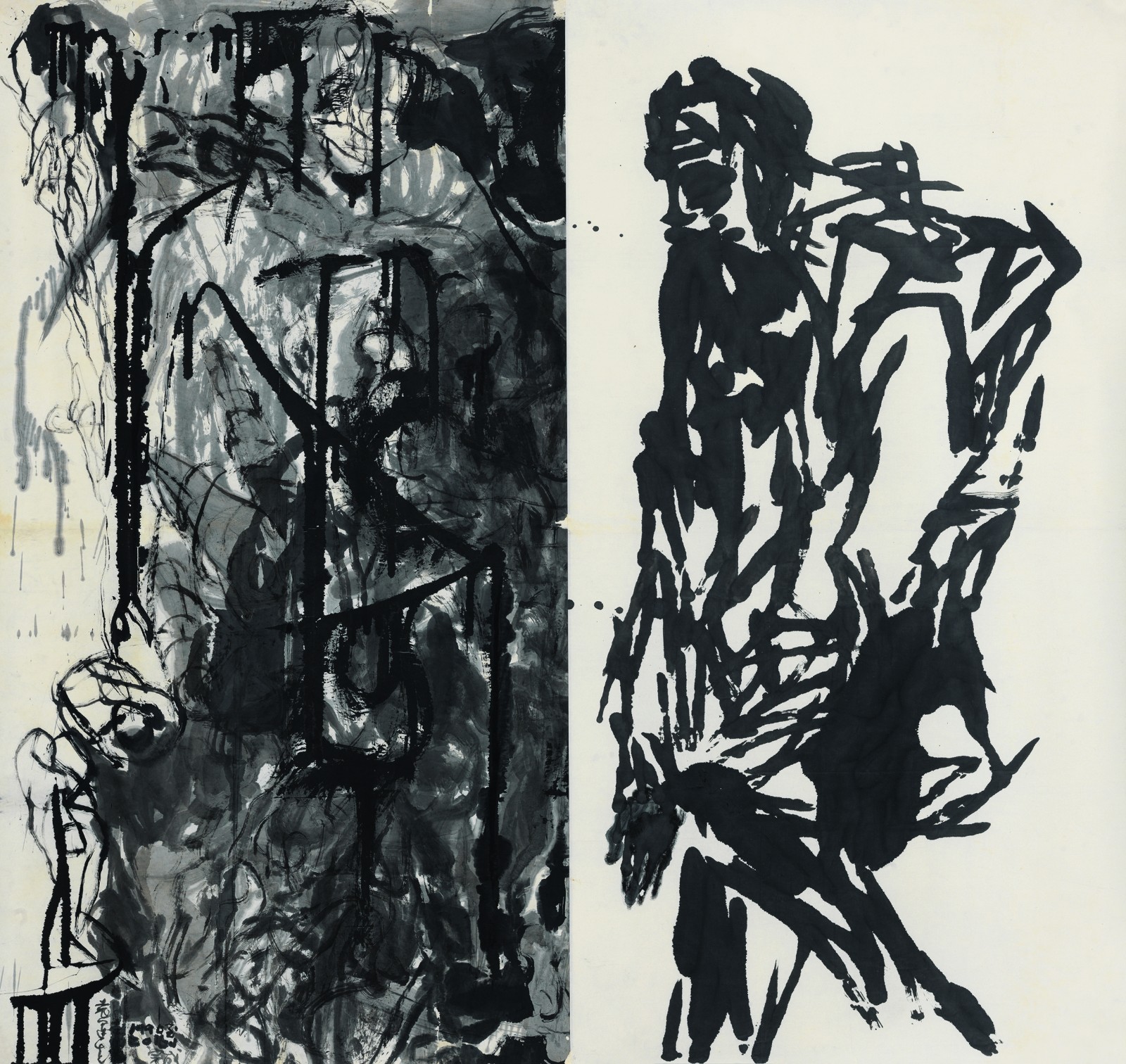
“Walking on the Road”, 174×192 cm, ink on paper, 1990-2016, Collection of the Artist
In creating the mural, “Two Ancient Chinese Tales—Blue + Red + Yellow = White?” (1983), at Tufts University, the combination of colours and lines intuitively reflected the creator’s experience of the time. It was a real-time manifestation and translation of the complex emotions of inner conflict, desire and frustration at the moment of painting. In the case of “Eye (In Memory of Lin Lin)” (1991) with the infectious anger and grief expressed in the painting, colour has become a critical pathway for Yuan to express his emotions in the works. In “Dissipation” which was completed in 1996, the expressionist language of harsh modelling coupled with bright and thick oils the visual nerves of viewers, clearly and powerfully conveying the surging emotions and stacked desires. The people in the painting immerse themselves in the world of dissipation, while underneath the picture there seems to be a silent cry of madness and pain.
“Eye (In Memory of Lin Lin)”, 240×360 cm, Oil on panel, 1991, Collection of CAFA Art Museum

“Dissipation”, 182×640 cm, Oil on canvas, 1995, Collection of the Artist
Breaking Away from the Viewpoint: One Brushstroke Conveys All
“Shi Tao had accurately expressed the Chinese painter’s unique approach to art… Starting from the first brushstroke that conveys ‘a(chǎn)ll’, the strokes continue and connect, forming organic constructions.”
Building upon the continuous interest in and excellent control of large-scale works, Yuan’s study of the relationship between lines and colours seems to have taken a step forward to incorporate the movement and rhythm of bodies. The creator no longer directly simulates or reproduces the objects, nor is he bound by the stylistic designation of abstraction or figuration. He has broken away from the observation and shaping method involving a fixed point of view. The images now result from the creator’s body turning, his line of sight flowing, and his “mental image” created by his perception and digestion of the surrounding environment and past experiences. Shitao’s theory of a single brushstroke is well interpreted here. The line created with one brushstroke is the basis of all modelling, and also the basis for all things to live on and run for ever.

“Gonggong Destroys Mount Buzhou, and Nuwa Mends a Hole in the Sky” (mural in the Daxing Airport), 300×2000 cm, Charcoal on canvas, 2019, Collection of the Artist

“Portrait of the Primogenitor”, 200×180 cm, Oil on canvas, 2009, Collection of the Artist
As for the subject matter, in addition to the passionate and pristine national colours and spirit pertaining to the Chinese ethnic minorities where Yuan’s interest clearly lies in, folk myths and legends appear frequently in Yuan’s mural paintings. He does not only absorb what is left from ancient times, but often gives them new interpretations in the context of the present. Myths and legends often trace back to the birth and destruction of the world and mankind. Hence, they are not only vivid remnants of national culture, but also universal existences that can transcend linguistic and cultural barriers. When incorporating them to mural paintings oriented to the general public, Yuan has found a unique language for interpreting and caring about the shared future of mankind, and even the shared future of all things.
Since his return to China in 1996, Yuan’s exploration of modern language and artistic spirit has further returned to the national culture and artistic language in the East and in China. He has gradually combined his exploration of his personal artistic language with his educational practice at the Oil Painting Department of the Central Academy of Fine Arts. Yuan’s early insights into sketching, modelling, and nationalisation were realised in the subsequent reform of art education and teaching. However, while emphasising the importance of national cultural roots for contemporary creativity, Yuan is equally wary of becoming a vassal of any culture, as he believes that handing over the right of discourse and losing the will to be autonomous is equally detrimental to openness and growth.
“Revel in the Universe’s Infinite Flux”, 300×1800 cm, Ink on canvas, 2011, donated by the artist to CAFA Art Museum, 2023
In 2011, Yuan at the age of 74 completed his largest mural to date. The title, “Revel in the Universe’s Infinite Flux”, refers to a poem by Tao Yuanming, part of which goes as “Drift on the Stream of Infinite Flux,/ Without joy, without fear:/ When you must go—then go,/ And make as little fuss as you can.” This huge mural, which occupies the high wall in the centre of the exhibition hall, is consisted of, not surprisingly, pure and free lines. The loose lines which would not have been impossible without the refined technique revel in the image, resonating the artist’s attitude of life – neither joyful nor fearful in the face of the ups and downs of destiny – and radiating the immense energy of life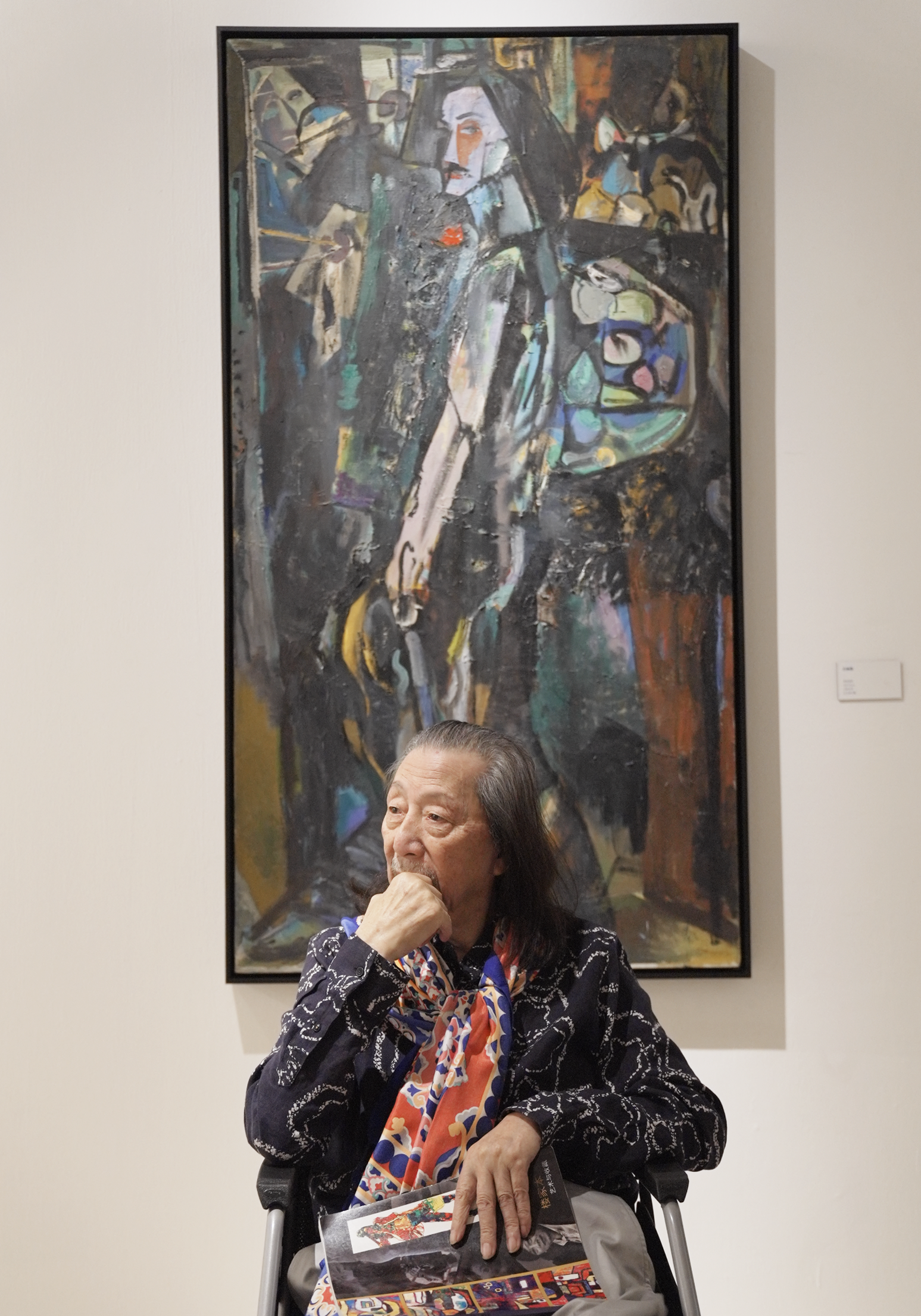
Yuan Yunsheng at the exhibition, Revel in the Universe’s Infinite Flux: Yuan Yunsheng & His Dream of Murals Painting
It is difficult to categorise Yuan’s work simply by chronology or period. His works from the same period often show a great variety. His preference for grand themes, large scale and ethnic elements evolved from his dream of mural painting has induced more possibilities for free exploration in his paintings. The fundamental prerequisites for his thoughts and feelings to roam freely on the canvas, which include the solid control of modelling and colours, and the critical thinking and judging over various eras, cultures and trends of thought, have undoubtedly been mastered by Yuan. Growing up in an era of contradictions, Yuan is an incomparably vigorous artist. His martyr-like enthusiasm and loyalty for the essence of art, and his open-mindedness in the face of life’s ups and downs as expressed in the poem, “when you must go—then go”, are exactly what this exhibition tries to convey to the audience, especially to the younger generation of art students [3].

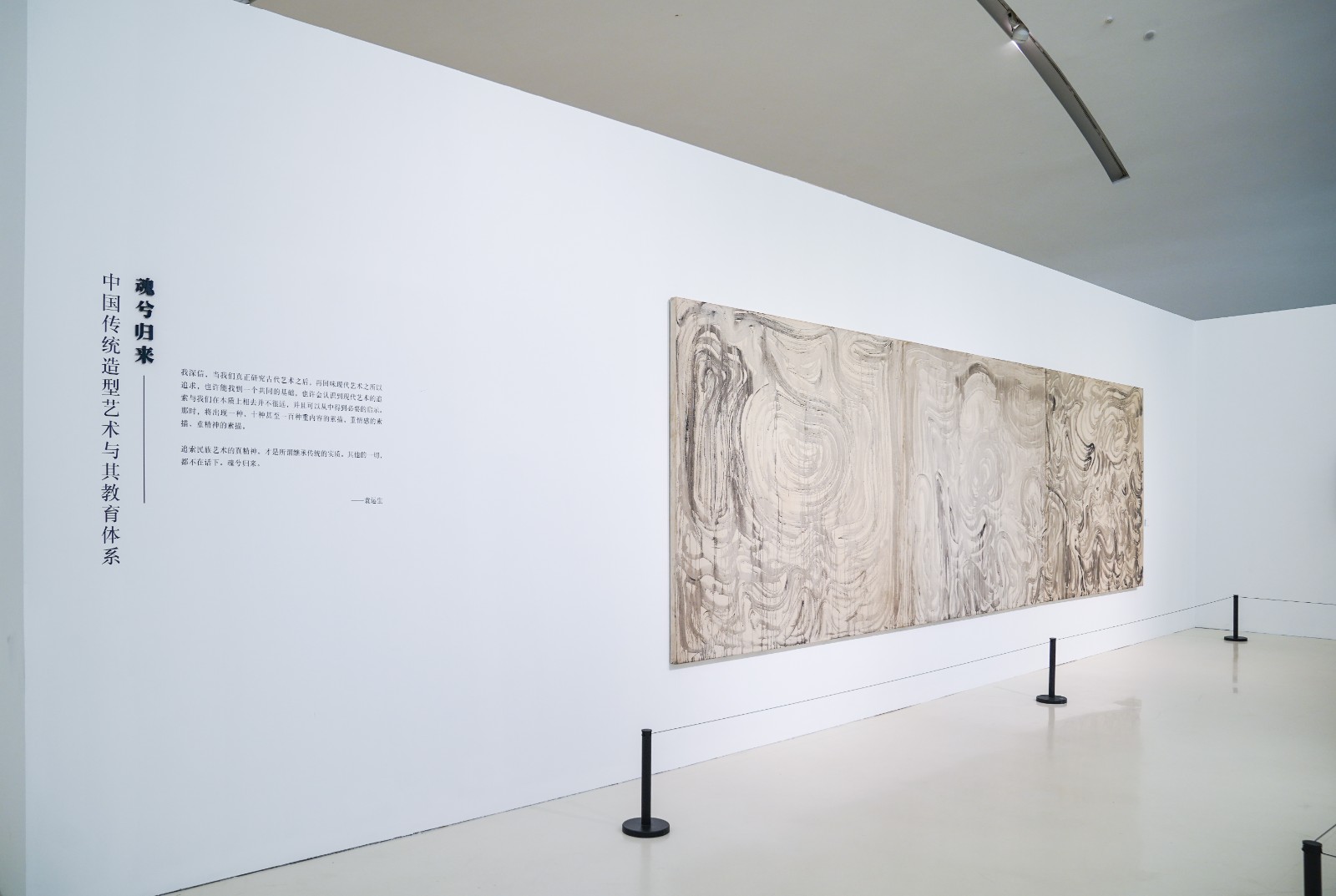
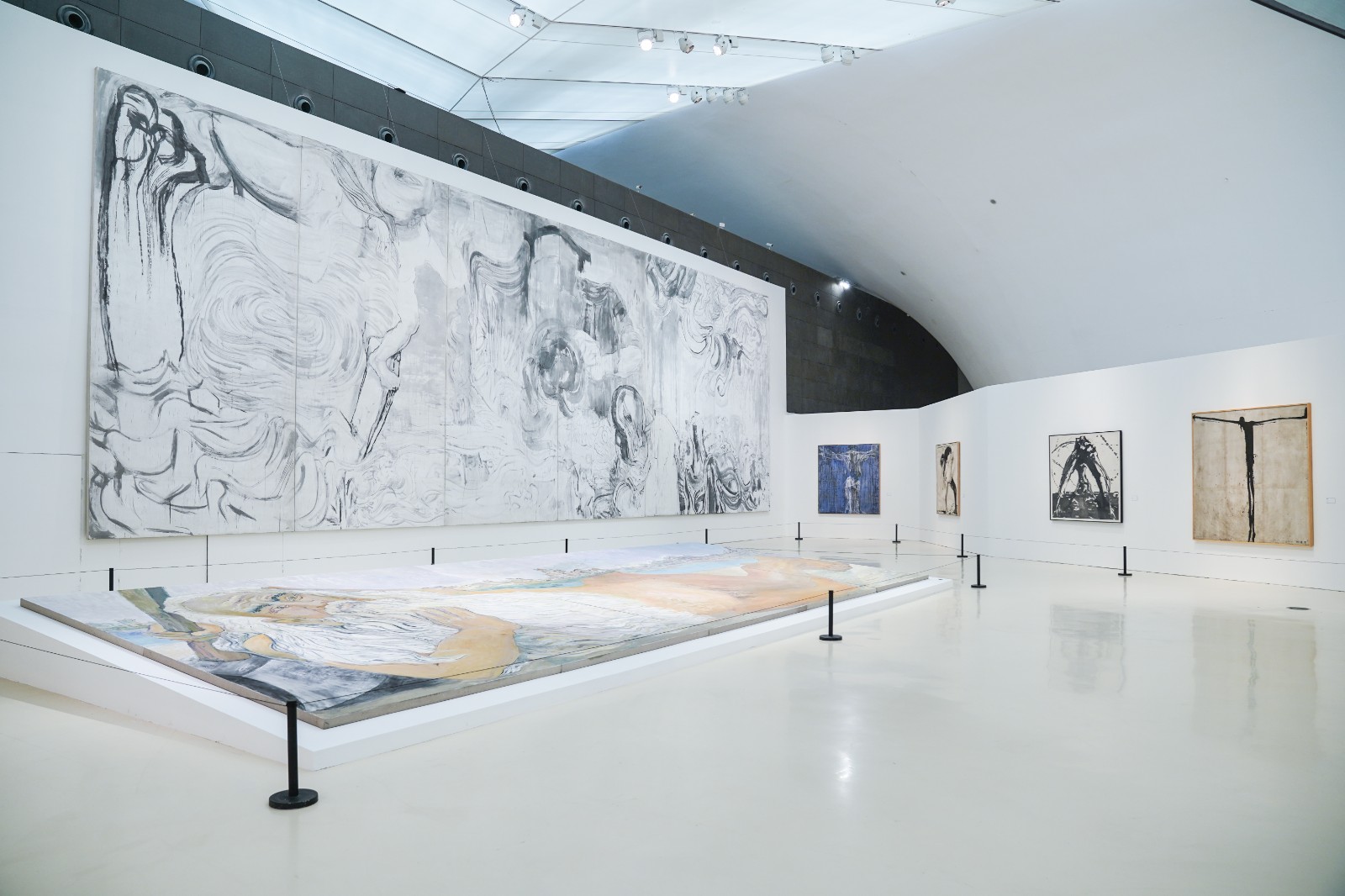
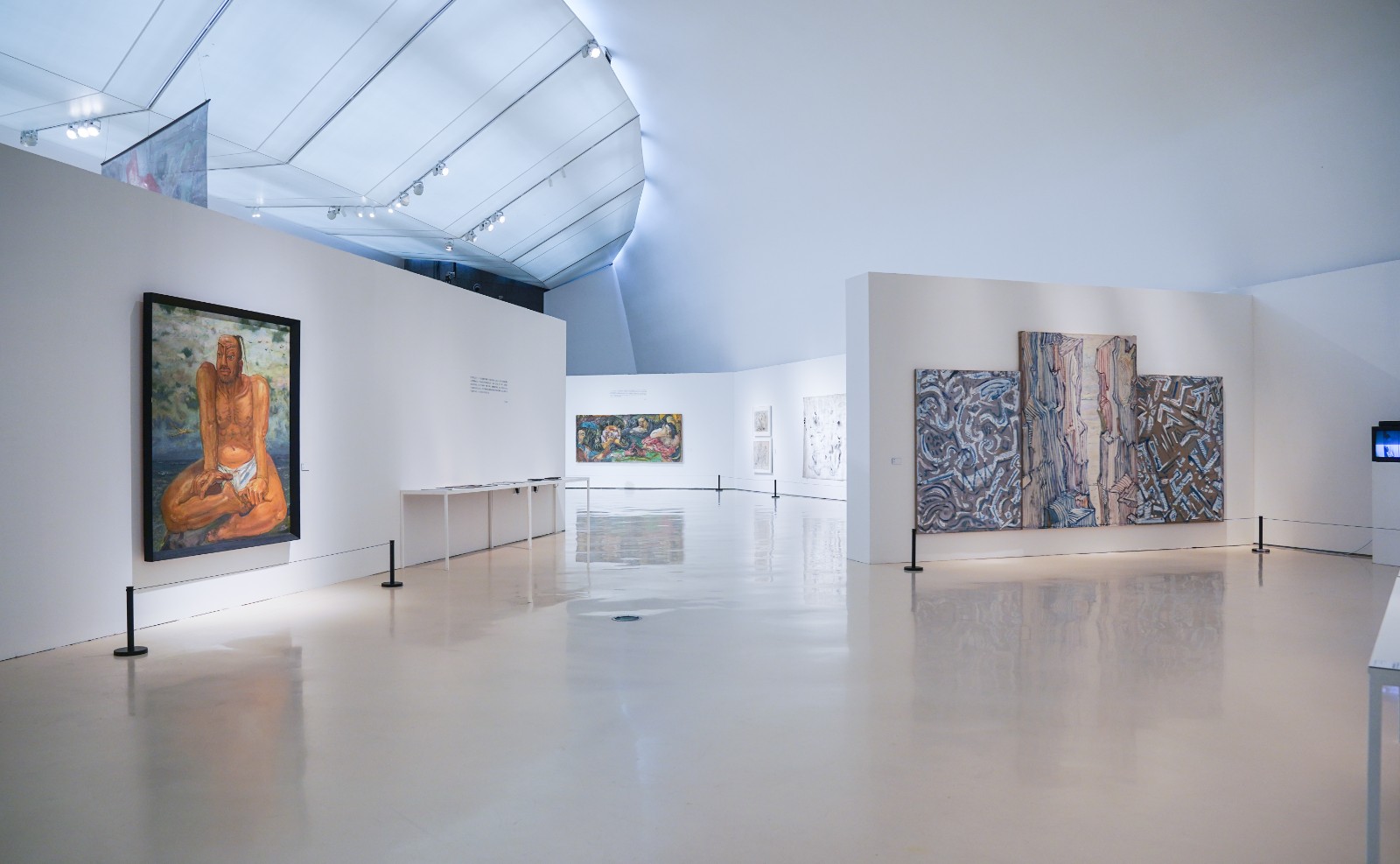

View of the exhibition, Revel in the Universe’s Infinite Flux: Yuan Yunsheng & His Dream of Murals Painting
Text by Emily Weimeng Zhou, edited by Sue/CAFA ART INFO
Installation View by Li Di.
Courtesy of the organiser.
Notes:
[1] [3] This is based on the interview with the curator, Li Yaochen, by CAFA ART INFO at the exhibition.
[2] This is based on "The Dream of Murals Painting" by Yuan Yunsheng, first published on Art Research, 1980 Issue 1.
About the exhibition:

Revel in the Universe’s Infinite Flux: Yuan Yunsheng and His Dream of Murals Painting
Host: Central Academy of Fine Art
Organiser: CAFA Art Museum, Oil Painting Department of CAFA
Duration: 15 Sep – 15 Oct 2023
Venue: 3B Gallery, CAFA Art Museum




























